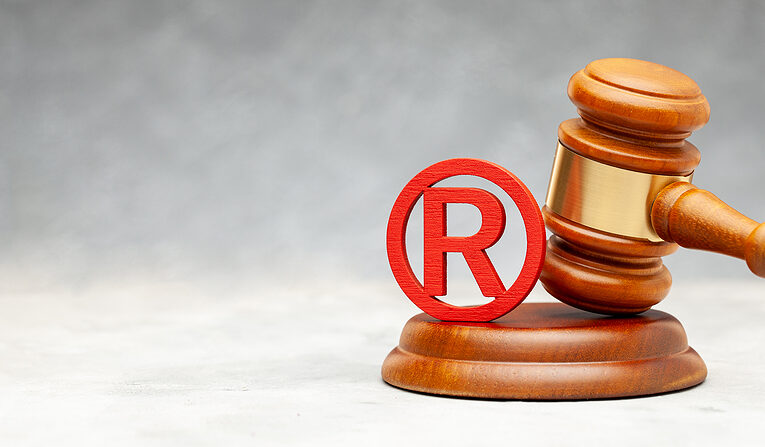Trademark litigation refers to the legal disputes that arise when one party believes another has infringed on their registered trademark rights. As companies invest significant time and resources into building their brands, trademark litigation has become an increasingly common way to protect intellectual property.
What is trademark litigation?
Trademark litigation is a legal process initiated when a trademark owner suspects a violation of their rights. The owner may file a trademark lawsuit against the alleged infringer, seeking remedies and enforcement of their trademark rights.
- Trademark disputes typically occur in a court of law, where parties present evidence and arguments to support their claims
- The court examines the presented evidence to determine if claims of infringement or other issues are valid
- Potential outcomes include injunctive relief, monetary damages, or other appropriate remedies
Trademark litigation aims to protect the exclusive rights granted to trademark owners and maintain the integrity of the trademark system. It can be an expensive process, often requiring the expertise of experienced trademark attorneys. However, it remains the primary avenue for enforcing trademark rights against unauthorized use.
Why Trademark Litigation Occurs
There are several common reasons trademark litigation may occur:
- Trademark infringement: Another party uses a trademark improperly or without authorization
- Breach of license agreement: Failure to comply with a trademark licensing contract
- Declaration of rights: seeking affirmation that one has rights to use a trademark
- Opposition proceedings: a trademark application deemed too similar
- Cancellation proceedings: seeking to cancel an existing trademark registration
Essentially, trademark owners initiate litigation when they believe their rights are being violated in a way that could cause financial harm or brand damage. The litigation aims to halt infringement and receive compensation where applicable.
Overview of the Trademark Litigation Process
While the details may vary by case, a standard trademark litigation process includes the following key stages:
- Initial assessment: The trademark owner identifies a potential violation and gathers evidence to evaluate legal options.
- Pre-trial actions: If litigation is pursued, the pre-trial phase involves fact-finding, issuing demands to cease and desist, negotiating settlements, and filing complaints.
- Trial: If no settlement is reached, the case goes to trial. This involves processes like motions, witness testimony, evidence submission, and arguments.
- Judgment: The court or jury reaches a verdict on trademark claims after evaluating evidence and arguments.
- Relief and damages: If infringement is proven, the judgment sets out remedies like injunctive relief and monetary damages.
- Settlement or appeal: Parties typically have 30 days post-judgment to appeal or negotiate a settlement.
At each phase, experienced trademark lawyers guide clients through the intricacies of litigation. Their expertise can prove invaluable in navigating this complex area of law.
Key Issues in Trademark Litigation
Trademark disputes involve analyzing various legal issues and factors. Some of the most common include:
Likelihood of Confusion
One of the core issues is evaluating whether two trademarks are confusingly similar. The more similar the trademarks, the higher the chance of confusion among relevant consumers. Courts examine visual, verbal, and conceptual elements in determining similarity. Evidence of actual confusion strengthens arguments for infringement.
Strength and Distinctiveness of Trademarks
Stronger, more distinctive trademarks receive greater legal protection. Marks that are arbitrary, fanciful, or coined terms not descriptive of the goods or services have high distinctiveness. Weaker marks must rely more heavily on evidence of confusion and other factors.
Types of Trademarks in Dispute
While trademarks provide exclusivity over words and logos, other types, like traded dress, offer protection for packaging, color schemes, building design, and overall visual branding. The specific type of trademark can impact arguments made in litigation.
Industry Customs and Practices
Conventions within an industry are considered during trademark litigation. If disputed trademarks coexist in an industry without issue, it may undermine claims that consumer confusion is likely. Industry experts often provide input on this dimension.
Common Causes of Action
Trademark infringement is the most frequent cause of action, but trademark litigation may also involve related claims like:
- Unfair competition: deceptive practices causing consumer confusion
- Trademark dilution: unauthorized use diminishes a famous mark’s strength
- Cybersquatting: bad faith registration of domain names featuring others’ trademarks
- Counterfeiting: intentional trafficking of goods with fake trademarks
False advertising is another common cause of action, alleging that promotions or ads have misled consumers about the attributes of a product or service.
The unique circumstances of each case determine which claims have merit for litigation. Experienced trademark lawyers thoroughly assess the viable causes of action.
Gathering Evidence
Evidence forms the foundation of any trademark case. Key types of evidence in litigation include:
Registration documents: properly registered trademarks are easier to enforce. Registration documents help establish validity.
Specimens showing trademark use: Examples demonstrating long, continuous use of the mark strengthen infringement arguments.
Search reports: Trademark search results provide proof of potential conflicting marks.
Consumer surveys: surveys gauging confusion between trademarks carry significant weight.
Instances of actual confusion Documented cases of real-life confusion strongly indicate the likelihood of confusion.
Expert witness testimony: industry experts may provide input on trademark expectations and perceptions.
Licensing agreements: documentation of authorized licensing arrangements helps avoid claims of abandonment.
Through discovery processes, each party obtains evidence to support their arguments in litigation.
Key Laws and Legal Tests
Lanham Act
The Lanham Act is the primary federal trademark law in the US. It outlines the rules around registration and enforcement, tests for infringement, and available remedies. Most trademark cases invoke Lanham Act arguments.
Likelihood of Confusion Test
To determine trademark infringement, courts use a likelihood of confusion multi-factor test. No single factor is decisive, but collectively, they indicate whether confusion is probable. The factors examined relate to trademarks, goods and services, markets, evidence of confusion, the defendant’s intent, and consumer care.
Trademark Dilution Tests
Proving dilution requires meeting specific legal tests. For blurring claims, the marks must be very similar, and the plaintiff’s mark must be famous and distinctive. For tarnishment claims, the diluting use must harm the reputation of the famous mark.
Selecting Where to File Complaint
Choosing the most favorable court jurisdiction and venue is an early strategic decision. Factors weighed when selecting where to file a federal trademark complaint include:
- Location of parties: courts with jurisdiction over the defendant’s location are common venues.
- Convenience: Venues minimizing travel and costs are preferred.
- Local laws and procedures: Distinct local legal landscapes can impact proceedings.
- Past relevant rulings: Venues with precedents favoring similar trademark arguments are advantageous.
- Speed: Some courts process cases faster than crowded venues.
Experienced trademark lawyers guide clients on venue selection, drawing on their litigation familiarity.
Evaluating Risks of Litigation
While litigation enforces rights, companies should also weigh certain risks, including
- legal expenses such as attorney’s fees, court costs, and discovery procedures that entail significant costs.
- Duration: Complex cases can take years for final resolution if appeals are pursued.
- Uncertainty: Despite the most solid arguments and evidence, court judgments have inherent unpredictability.
- Brand impacts: lawsuits could negatively shape public perceptions of a brand, especially if viewed as frivolous.
Weighing potential rewards against these risks helps determine if litigation is the best approach for the circumstances at hand.
Alternative Dispute Resolution Options
Litigation is not the only option for trademark disputes. Alternative dispute resolution (ADR) paths like arbitration, mediation, and negotiated settlements help resolve issues outside court proceedings. ADR options offer benefits like:
- Faster resolution: Settling disputes takes less time without court formalities.
- Lower costs: Mediation and arbitration have fewer fees than litigation.
- Flexibility: Parties control ground rules and negotiation terms.
Privacy: Confidential processes protect





